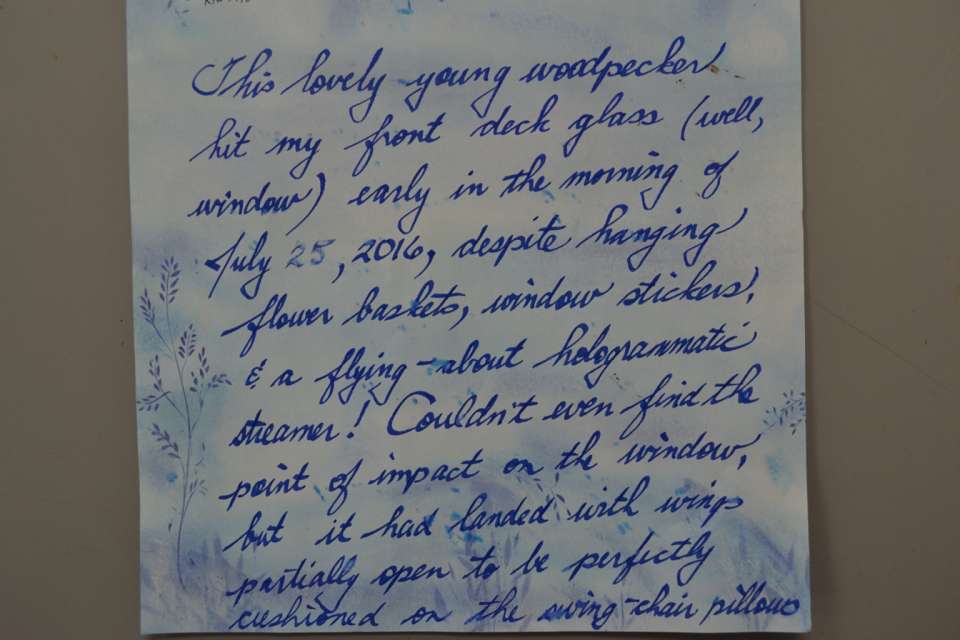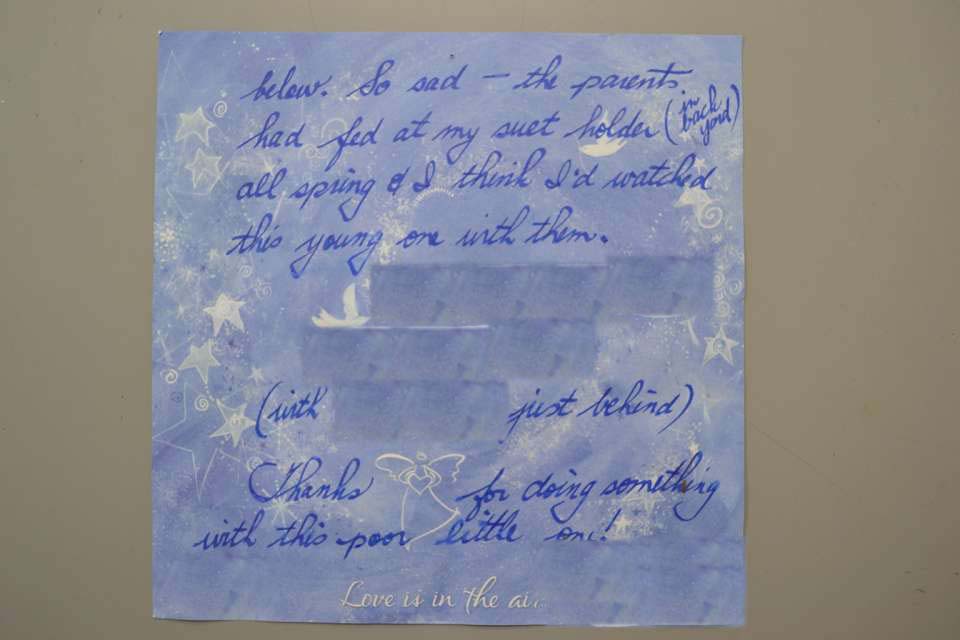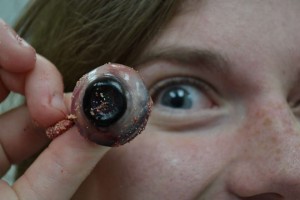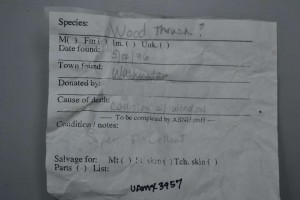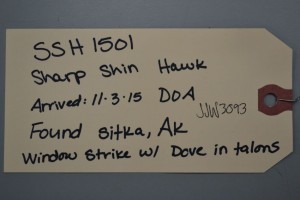Changes in the 24th edition—2018 (downloadable at right)
ADDITIONS TO THE CHECKLIST in 2017 (in taxonomic order)
Nazca Booby Sula granti: Ad, 30 Aug 2017, 13.5 mi/21 km off East Amatuli Island, Barren Islands, entrance to Cook Inlet, at 58° 55ʹ N 151° 35ʹ W (M. G. Levine). Photos AKCLC. The identification of another bird reported as this species one week earlier (Ad, 24 Aug 2017, 40 mi/64 km south of Tugidak Island, Kodiak archipelago, at 55° 58ʹ N 154° 34ʹ W (S. Cobb) was not agreed upon unanimously by the committee; a second vote will be conducted in 2018.
Black Kite Milvus migrans: One bird, 2-3 Jan 2017, St. Paul Island, Pribilof Islands (B. Lestenkoff). Photos AKCLC.
Rock Wren Salpinctes obsoletus: One bird, 3 Jul to at least 18 Nov 2017, Gustavus (B. B. Paige, J. D. Levison, R. B. Benter, N. Drumheller, and others). Photos AKCLC.
Thick-billed Warbler Acrocephalus aedon: One bird, 8-13 Sep 2017, Gambell, St. Lawrence Island (R. Stoll, V. Stoll, G. H. Rosenberg, A. J. Lang, G. Scyphers, and others). Photos AKCLC.
River Warbler Locustella fluviatilis: One bird, 7 Oct 2017, Gambell, St. Lawrence Island (S. Bryer, C. Irigoo Jr., E. Banstorp, P. E. Lehman, and others). Photos AKCLC.
Pied Wheatear Oenanthe pleschanka: SY female, 4 Jul-4 Aug+2017, Cape Nome, Seward Peninsula (A. Harper, J. D. Levison, R. B. Benter, J. Bosler, T. G. Tobish Jr., and others). Photos AKCLC.
Northern Parula Setophaga americana: Singing male, 28-29 Jun 2017, Ketchikan (S. C. Heinl and A. W. Piston). Photos AKCLC. Transferred from the unsubstantiated list.
CHANGES TO THE UNSUBSTANTIATED LIST
Northern Parula was substantiated in 2017 and removed to the main list.
STATUS CHANGES
The definition of Accidental has been emended to read: “One or two Alaska records, or none in last 30 years.” As a result, we now maintain Cook’s Petrel, American Black Duck, and Fieldfare as Accidental.
Least Flycatcher is now maintained as Rare/annual. Dusky Warbler is now maintained as Casual.
OTHER ALASKA CHANGES FOLLOWING AOU Check-list Supplement 58 (2017)
In the family Anatidae the genus Chen has been submerged in Anser; the Checklist of Alaska Birds now begins with Emperor Goose Anser canagicus, Snow Goose A. caerulescens, and Ross’s Goose A. rossii, in that order.
The dabbling ducks have been extensively revised and reordered. Baikal Teal is now in the monotypic genus Sibirionetta and directly follows Aix. The ‘blue-winged’ ducks – in the order Garganey, Blue-winged and Cinnamon teal, and Northern Shoveler – are removed to the genus Spatula; and Gadwall, Falcated Duck, and Eurasian and American wigeon are now in the genus Mareca and listed in that order. The genera Sibirionetta, Spatula, and Mareca separate Aix from Anas.
In the family Scolopacidae the curlews have been reordered: Bristle-thighed, Whimbrel, Little, Long-billed, and Far Eastern. Bar-tailed Godwit is now listed first in Limosa.
In the family Laridae the former widely-recognized Thayer’s Gull has been submerged in Iceland Gull, as L. glaucoides thayeri. (Since the AKCLC has maintained this taxon that way for years here in Alaska, the only change to the Alaska list is to delete the parenthetic “includes thayeri” after listing for Iceland Gull.)
In the family Ardeidae the genus Mesophoyx has been submerged in Ardea, so Intermediate Egret is now Ardea intermedia.
In the family Accipitridae the subspecies of the former “Northern Harrier Circus cyaneus” have been elevated to status as separate Old World and New World species, the Hen Harrier C. cyaneus and the Northern Harrier C. hudsonius, respectively. The identification of a partial specimen from Attu Island (a salvaged distal left wing tentatively identified long ago at U.S. National Museum by its length as C. c. cyaneus—see Gibson and Byrd 2007) has not yet been confirmed through its DNA, which process we expect to see accomplished in 2018. Only then will we know if the Attu bird provides the only Alaska (and North American) record of Hen Harrier C. cyaneus—or has been an incorrectly identified example of the North American taxon. More later.
In the family Laniidae the former Northern Shrike has been split into two species. Lanius excubitor (Great Gray Shrike) is now regarded as the bird of the western Old World, while the related birds of the eastern Old World and all of the New World are now Lanius borealis (Northern Shrike).
Genera in the family Fringillidae are re-ordered Coccothraustes, Carpodacus, Pinicola, Pyrrhula, Leucosticte, Haemorhous, Chloris, Acanthis, Loxia, and Spinus. House Finch is listed first in Haemorhous.
The former family Emberizidae has been split and now comprises only Old World Buntings. All New World sparrows and allies are removed from to the newly erected family Passerellidae, which directly follows Emberizidae in linear position. The order of genera within Passerellidae remains the same, Pipilo through Junco.
Genera in the family Icteridae have been rearranged in the order Xanthocephalus, Dolichonyx, Sturnella, Icterus, Agelaius, Molothrus, Euphagus, and Quiscalus.
The family Parulidae has been moved to linear position directly following the family Icteridae.
The family Cardinalidae directly follows Parulidae and now concludes the Checklist of Alaska Birds.
It was another busy year. If I have omitted any substantive change here, the omission has been inadvertent.
DDG (for the AKCLC), 6 January 2018
Alaska Checklist Committee: Daniel D. Gibson, Lucas H. DeCicco, Robert E. Gill Jr., Steven C. Heinl, Aaron J. Lang, Theodore G. Tobish Jr., and Jack J. Withrow.
Gibson, D. D., and G. V. Byrd. 2007. Birds of the Aleutian Islands, Alaska. Series in Onithology 1. Nuttall Ornithological Club and American Ornithologists’ Union.

